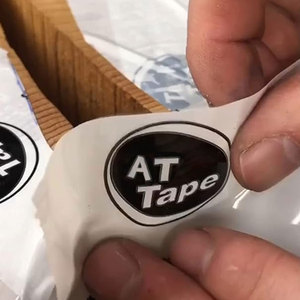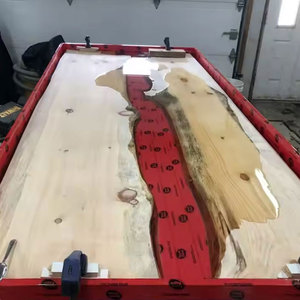
All categories
Featured selections
Trade Assurance
Buyer Central
Help Center
Get the app
Become a supplier

(2012 products available)
















































An uncoupling membrane is a layer installed beneath floor coverings (like tiles) to prevent cracks and movement from being transmitted from the subfloor to the tiles above. It acts as a buffer, allowing for slight movements without damaging the tiles. This is especially useful in areas with shifting soils or where the subfloor and tile material may expand and contract at different rates.
Uncoupling membranes are available in different designs to meet various flooring needs. These designs include:
Plastic sheets
These are basic uncoupling membranes made of durable plastic. The sheets are laid directly onto the subfloor. Then, tiles are glued on top. The plastic forms a barrier that uncouples any movement from the subfloor to the tiles.
Fiberglass mesh
Mesh membranes have a layer of fiberglass woven into a plastic sheet. Like the basic plastic uncoupling membranes, the fiberglass mesh membranes are placed on the subfloor first. The tiles are then installed on top using adhesive.
Thin-set mortar
This membrane comes as a paste that must be spread and allowed to dry. It hardens into a stable uncoupling layer. Thin-set mortar works well for uncoupling but is not as effective at waterproofing compared to other membrane types.
Rubber sheets
Rubber sheets are flexible and can absorb movements well. They help to uncouple the tiles from the subfloor. However, rubber sheets do not provide as much waterproofing as other membranes. Also, they may not be compatible with certain tile adhesive.
Cement backer board
These boards are made of cement and glass fibers. They form a strong uncoupling barrier between the subfloor and tiles. However, they are heavy and can be tricky to install compared to other membrane types.
Foam boards
Foam boards are light and easy to install. They provide good uncoupling from the subfloor. However, they may not be as durable as other membrane types in areas with heavy foot traffic.
Peel and stick membranes
These membranes have adhesive backing. They can be quickly stuck onto the subfloor before installing the tiles. The peel-and-stick uncoupling membranes are convenient for DIY projects.
The features of uncoupling membranes provide various benefits in different building projects. Here are the key functions together with their features:
Stress Relief
One major function of uncoupling membranes is to relieve stress. Tiles are subjected to stress due to movement and changes in temperature. This stress can cause cracks in the tiles and grout lines. The membranes absorb this stress and reduce its impact on the tiles, preventing cracks and breaks. This helps to keep the tiles intact and maintains their aesthetic value.
Moisture Control
Controlling moisture is an important aspect of any building project. Uncoupling membranes help to control moisture by preventing it from getting to the substrate. This reduces the risk of mold growth and other moisture-related problems. Some membranes have built-in drainage channels that direct moisture away from the tiles.
Separation
The membrane's main purpose is to decouple the tile from the substrate. This allows for vertical movement and minimizes the transfer of stress from the substrate to the tile. This separation reduces the chances of the tiles cracking due to pressure or temperature changes. It also allows for the substrate and tile to move independently, protecting the tile surface from damage.
Support and Load Distribution
Uncoupling membranes offer a support structure for the tiles. They are designed to distribute the load of the tiles evenly. This load distribution helps to prevent the formation of weak points that can lead to cracks. The tiles are held firmly in place without the risk of losing grip or breaking.
Adhesion Promotion
The surface of the uncoupling membrane is designed to enhance the bond between the tiles and the mortar. This ensures that the tiles remain in place for a long time, eliminating the need for frequent repairs. The membranes create a strong bond between them and the tiles, promoting adhesion and ensuring stability.
Ease of Installation
Uncoupling membranes are very easy to install. They reduce the complexity of the tile installation process, making it more straightforward. Their design minimizes the need for precise leveling and allows for quick installation of tiles.
The uncoupling membrane is used in various industries, particularly in construction and tiling. Its applications include:
When choosing an uncoupling membrane, it is important to consider several factors to make a suitable selection for the intended application. The following are some of the basic tips for selecting the right product:
Consider the Substrate
The type of substrate or surface on which the membrane will be installed should be considered. Different membranes are designed to be used on different substrates. Thus, it is important to choose a product compatible with the given substrate.
Consider the Tile Type and Size
The type and size of the tiles being used should be considered. Some membranes are better suited for specific tile materials. For instance, porcelain, ceramic, or natural stone tiles. Additionally, some membranes are better suited for large-format tiles, while others are ideal for smaller tiles.
Consider the Environmental Conditions
The environmental conditions where the membrane will be installed should be considered. For instance, some membranes are better suited for humid or wet environments, like bathrooms and kitchens. On the other hand, others are ideal for dry environments.
Consider the Ease of Installation
The ease of installation of the membrane should be considered. Some membranes, like tile matting membranes, are easier to install than others. Thus, it is important to choose a product that is as easy to install as the level of expertise required.
Consider the Budget
The available budget for purchasing and installing the membrane should be considered. Different membranes come with different costs. Thus, it is important to choose a product that is within the budget and meets the required performance.
Consider the Manufacturer’s Recommendations
The recommendations provided by the manufacturer should be reviewed carefully. This is to ensure that the right membrane is selected for the specific application. Additionally, the technical data sheets should be consulted to better understand the performance characteristics and installation requirements.
Consider the Additional Features
It is important to consider any additional features that may be required for the specific application. For instance, some membranes offer additional features, such as waterproofing, which prevents moisture buildup. Others, like heating membranes, come with in-built heating elements that provide radiant warmth. The right membrane should be selected based on the required additional features.
Q1: How is an uncoupling membrane installed?
A1: An uncoupling membrane is installed on top of a substrate, such as concrete or plywood. The membrane is bonded to the substrate using thin-set mortar. The membrane creates a waterproof barrier that can be grouted and laid on tiles or stones.
Q2: When uncoupling membrane tiles are laid, do they need to be sealed?
A2: Yes, the tiles need to be sealed. The grout and tiles are porous, meaning they can absorb liquids. Sealants create a barrier that prevents liquids from entering and protects against stains and damage.
Q3: What types of materials can be used as uncoupling membranes?
A3: There are different materials that can be used as uncoupling membranes. They include polyethylene, polypropylene and modified thin-set mortar.
Q4: What are the benefits of using uncoupling membranes?
A4: Uncoupling membranes help to prevent cracked tiles, eliminate noise, and create a waterproof barrier. They protect the finished tile or stonework from damage caused by cracks and movement in the substrate. It also prevents liquids from penetrating the substrate and creates a barrier against moisture, mold, and mildew. Uncoupling membranes also reduce sound transmission and create a level surface for laying tiles.
Q5: What are the different types of uncoupling membranes?
A5: There are two main types of uncoupling membranes. They include the crack isolation membrane and the waterproofing membrane. The crack isolation membrane prevents cracks from transferring through the substrate to the tile surface. The waterproofing membrane prevents water from penetrating through to the substrate. It is used in areas with high moisture, such as showers and backsplashes.